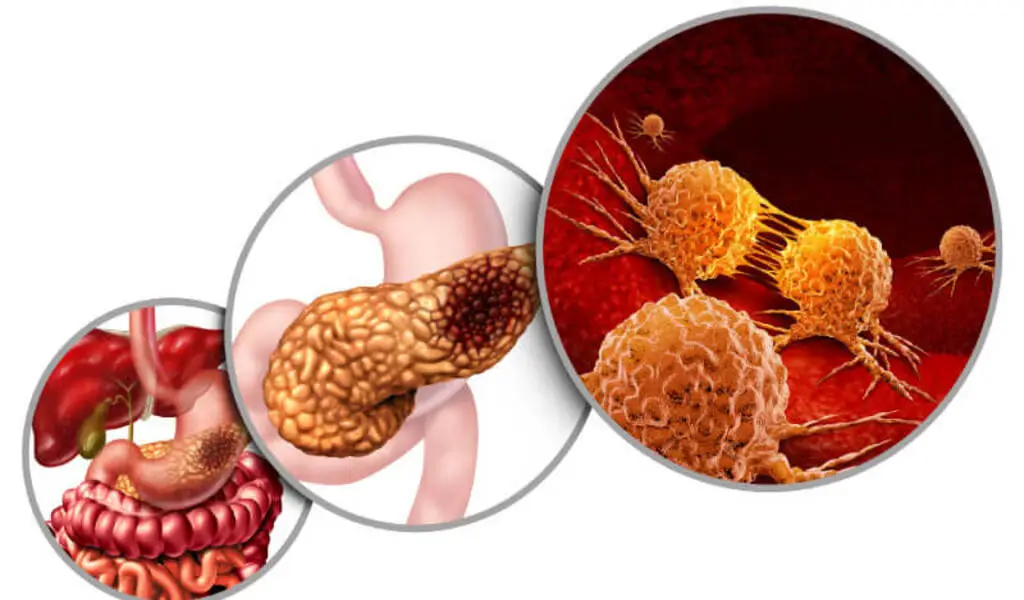(CTN News) – Pancreatic cancer, a formidable adversary in the realm of oncology, demands our attention due to its often subtle and challenging early signs. In this article, we’ll delve into understanding pancreatic cancer, recognizing its early symptoms, exploring diagnostic methods, and discussing the importance of timely detection for effective management.
1. Introduction
Overview of Pancreatic Cancer
Pancreatic cancer is a malignancy that develops in the pancreas, an essential organ responsible for digestion and blood sugar regulation. The challenge lies in its silent progression, often leading to late-stage diagnosis.
Importance of Early Detection
Early identification of pancreatic cancer is crucial for initiating prompt treatment and improving outcomes. Detecting the disease in its early stages enhances the effectiveness of therapeutic interventions.
2. Understanding Pancreatic Cancer
Causes and Risk Factors
Various factors contribute to the development of pancreatic cancer, including genetic predisposition, smoking, obesity, and chronic pancreatitis. Understanding these risk factors is pivotal for proactive health measures.
Common Symptoms
Pancreatic cancer symptoms are often nonspecific, making them challenging to attribute solely to the disease. Familiarizing ourselves with these symptoms can aid in early recognition.
3. Early Signs of Pancreatic Cancer
Unexplained Weight Loss
Unexpected weight loss, not attributable to lifestyle changes, can be an early indicator of pancreatic cancer. The malignancy’s impact on metabolism can lead to noticeable weight loss.
Abdominal Pain and Discomfort
Persistent pain or discomfort in the abdomen, especially around the pancreas area, should raise concerns. Such discomfort may be indicative of the tumor’s presence.
Jaundice
Yellowing of the skin and eyes (jaundice) is a common sign of pancreatic cancer. It occurs when the tumor obstructs the bile duct, affecting the normal flow of bile.
4. Diagnostic Methods
Imaging Tests
Non-invasive imaging techniques like CT scans and MRIs play a crucial role in detecting tumors and evaluating their size and location.
Blood Tests
Specific blood markers, such as CA 19-9, can aid in diagnosing pancreatic cancer. Elevated levels may prompt further investigation.
Biopsy
A biopsy, often through endoscopic procedures, allows for the examination of pancreatic tissue for cancer cells, providing a definitive diagnosis.
5. Importance of Timely Detection
Impact on Treatment Options
Early detection expands the array of treatment options, including surgery, chemotherapy, and radiation therapy. Timely intervention can prevent the cancer from spreading.
Improved Survival Rates
Statistically, patients diagnosed in the early stages of pancreatic cancer exhibit higher survival rates. Early treatment increases the chances of successful outcomes.
6. Risk Reduction and Prevention
Lifestyle Changes
Adopting a healthy lifestyle, including a balanced diet and regular exercise, can mitigate some risk factors associated with pancreatic cancer.
Screening for High-Risk Individuals
Individuals with a family history of pancreatic cancer or certain genetic mutations may benefit from regular screenings for early detection.
7. Support and Resources
Patient Support Groups
Joining patient support groups provides a valuable network for individuals navigating the challenges of pancreatic cancer. Shared experiences and advice can be invaluable.
Treatment Options and Centers
Accessing reputable treatment centers and exploring various treatment options empower individuals facing pancreatic cancer with informed choices.
8. Coping Strategies
Emotional and Mental Well-being
Coping with pancreatic cancer involves addressing emotional and mental well-being. Support from mental health professionals and loved ones is vital.
Family Support
The journey with pancreatic cancer is not only an individual struggle but a collective one. Involving family members in the support system strengthens resilience.
9. Conclusion
In conclusion, early identification of pancreatic cancer is a pivotal factor in enhancing treatment success and improving overall survival rates. Understanding the early signs, embracing lifestyle changes, and accessing timely medical intervention are crucial steps in managing this challenging disease.
10. Frequently Asked Questions
FAQs about Pancreatic Cancer
Q: What are the most common symptoms of pancreatic cancer?
A: Common symptoms include unexplained weight loss, abdominal pain, and jaundice.
Q: How is pancreatic cancer diagnosed?
A: Diagnostic methods include imaging tests, blood tests, and biopsies.
Q: Are there effective prevention measures?
A: Adopting a healthy lifestyle and regular screenings for high-risk individuals can help reduce the risk.
Q: What impact does early detection have on treatment?
A: Early detection expands treatment options and improves survival rates.
Q: Where can individuals find support during their pancreatic cancer journey?
A: Patient support groups and reputable treatment centers are valuable resources.






